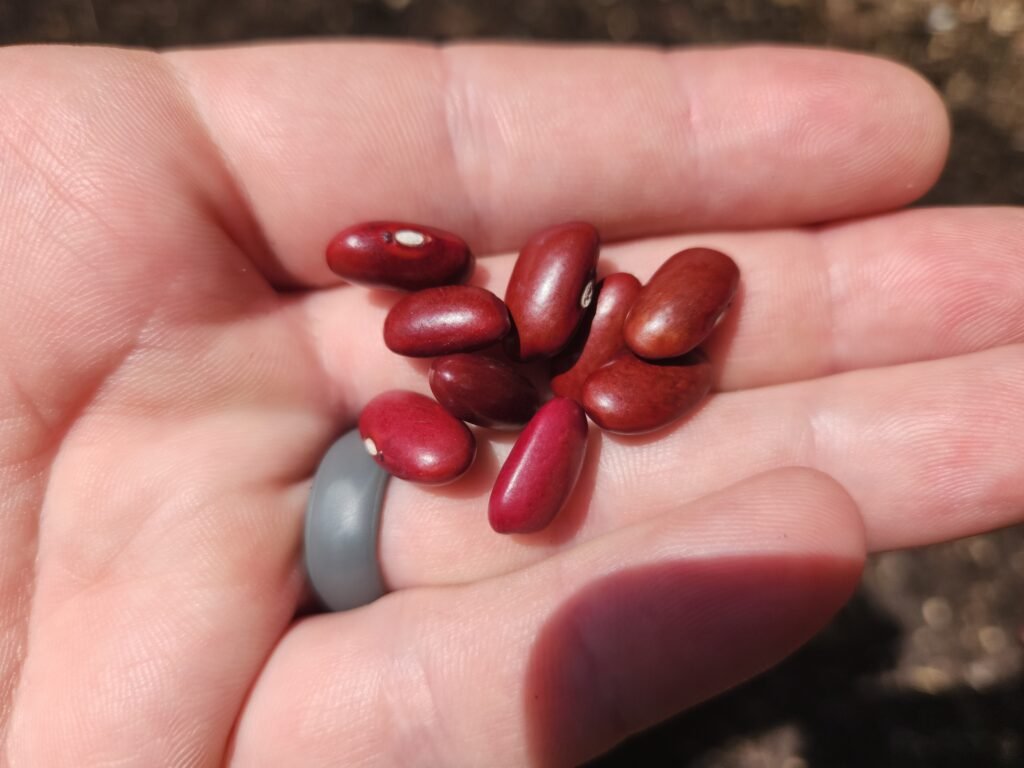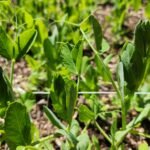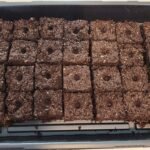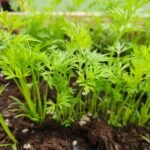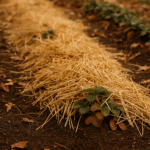Kidney beans (also known as red beans) are a staple in most pantries. For us, we use them all year round in every sort of dish from chili to burritos to pasta salads. We even pureed some to give to our daughter for one of her first foods.
This post contains affiliate links. If you use these links to buy something we may earn a commission. Thanks.
Kidney Beans Quick Start Guide
- Type: Warm season, dry bean
- Sow: Direct seed after last frost when soil is at least 15 to 18°C (60 to 65°F)
- Spacing: 3 to 4 inches apart, rows 18 to 24 inches apart
- Sun: Full sun, 6 to 8 hours daily
- Water: Keep evenly moist until pods fill, then let plants dry down
- Days to maturity: 90 to 120 days, depending on variety and weather
- How many to plant: 10 to 15 plants per person for a small winter stash
- Storage: Dry completely, shell, then store in airtight jars in a cool, dark place
Kidney beans are high in fiber and protein, they have a good amount of iron and magnesium, and they have complex carbs that make you feel full longer.
I wanted to grow kidney beans at this point in our lives mostly to see how it works first hand. We also grew black beans and all the steps are the same for both. Dried beans are relatively cheap to buy in bulk right now so I’m not sure if we will continue to grow them every year.
Having the knowledge of how to grow kidney beans, how to dry kidney beans, and how to store kidney beans gives me a sense of security. We live in a ever changing world and the more knowledge you can collect the better off you are.
What Is A Kidney Bean Seed?
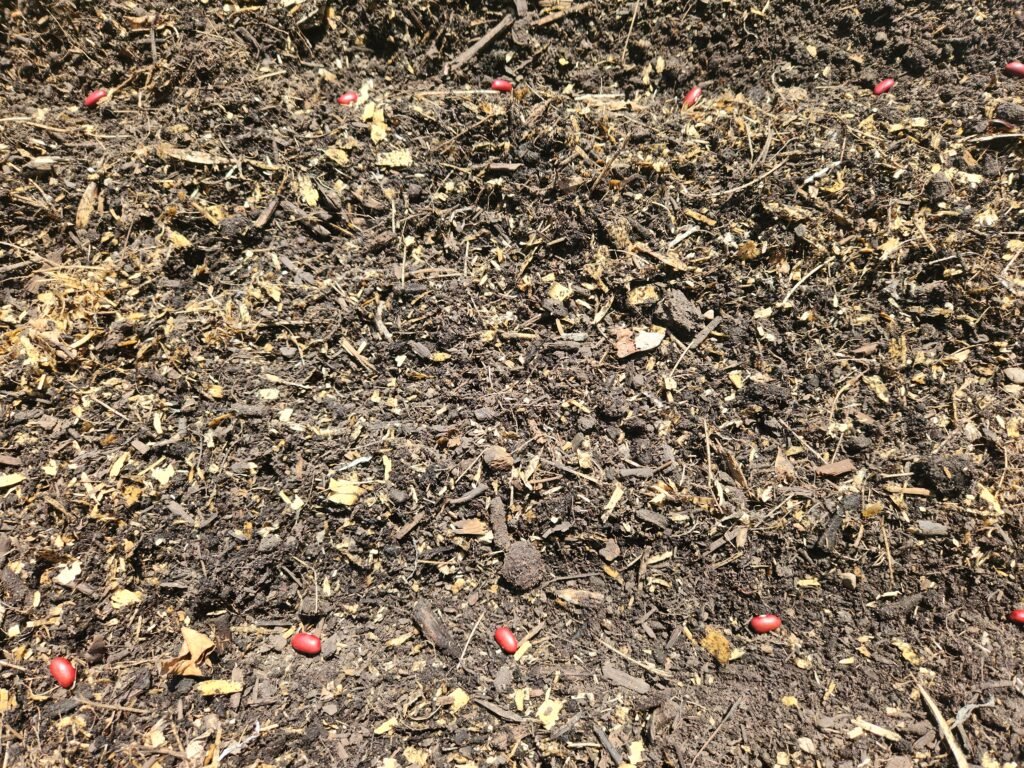
A kidney bean seed is exactly what you think it would be. It is simply a dried kidney bean, that when planted, will grow into a small bushy plant to produce more kidney beans.
How To Plant Kidney Beans For A Big Harvest?
It is not recommended to start kidney beans indoors. They have a shallow root system and do not transplant well. Direct sowing will provide the best results.
Kidney beans require full sun (6-8 hours) and prefer neutral soil acidity. They should be planted so that each plant has 2-4 inches between them. Space your rows 12 inches apart. You can high density plant your kidney beans by staggering the rows and spacing the rows only 6 inches apart.
Can You Grow Kidney Beans In Containers?
Yes! Kidney beans grow well in containers since they have a relatively small root system. If using containers remember to have a large enough container to allow for optimal growth while providing enough space between plants.
How Many Kidney Bean Plants To Grow Per Person?
It depends on whether you want a small winter stash or enough beans to rely on as a real pantry staple.
Small batch for occasional meals:
- Plant 10 to 15 plants per person
- Expect roughly 1 to 1.5 cups of dry beans per plant, depending on variety and weather
Regular weekly use through winter:
- Plant 25 to 40 plants per person
- This usually gives 12 to 20 pounds of dry beans per adult per year
Self-reliance or long-term storage focus:
- Plant 50 to 60+ plants per person
- Combine with other storage crops like squash, potatoes, or corn for balanced calories
Rough yield math: Most gardeners get about 10 pounds of dry beans per 100 square feet when conditions are good.
If you want to be more precise, track yields by variety and note which plants performed best in your conditions. Yields can vary a lot with soil fertility and rainfall.
Printable Kidney Bean Planting Guide (At-a-Glance Chart)
| Household Size | Purpose | Plants to Grow | Estimated Yield | Notes |
|---|---|---|---|---|
| 1 person | Small stash (occasional meals) | 10–15 plants | 1–2 cups/lb per plant | Good for soups, chili, and backups |
| 1 person | Weekly use through winter | 25–40 plants | 6–15 lbs total | Store in jars or cloth bags |
| 1 person | Self-reliance / bulk storage | 50–60+ plants | 12–20 lbs total | Pair with storage squash or corn |
| 2 adults | Small stash | 20–30 plants | 2–4 lbs | Easy to grow in small raised beds |
| 2 adults | Weekly use | 50–80 plants | 12–30 lbs | Best in 2+ staggered rows |
| 2 adults | Long-term storage | 100+ plants | 25–40 lbs | Needs full sun + good airflow |
| Family of 4 | Small stash | 40–60 plants | 4–8 lbs | Good starting point |
| Family of 4 | Weekly use | 100–160 plants | 25–50 lbs | Plan ~100 sq ft |
| Family of 4 | Long-term storage | 200+ plants | 50–80+ lbs | Consider pole beans to maximize space |
| Family of 6+ | Small stash | 60–90 plants | 6–12 lbs | Scale based on weekly meals |
| Family of 6+ | Weekly use | 150–240 plants | 35–75 lbs | Rotate beds each year |
| Family of 6+ | Long-term storage | 250–300+ plants | 60–100+ lbs | Requires good drying weather |
Want the downloadable version for printing?
[Click here to download the PDF version.]
How Long Do Kidney Beans Take To Germinate?
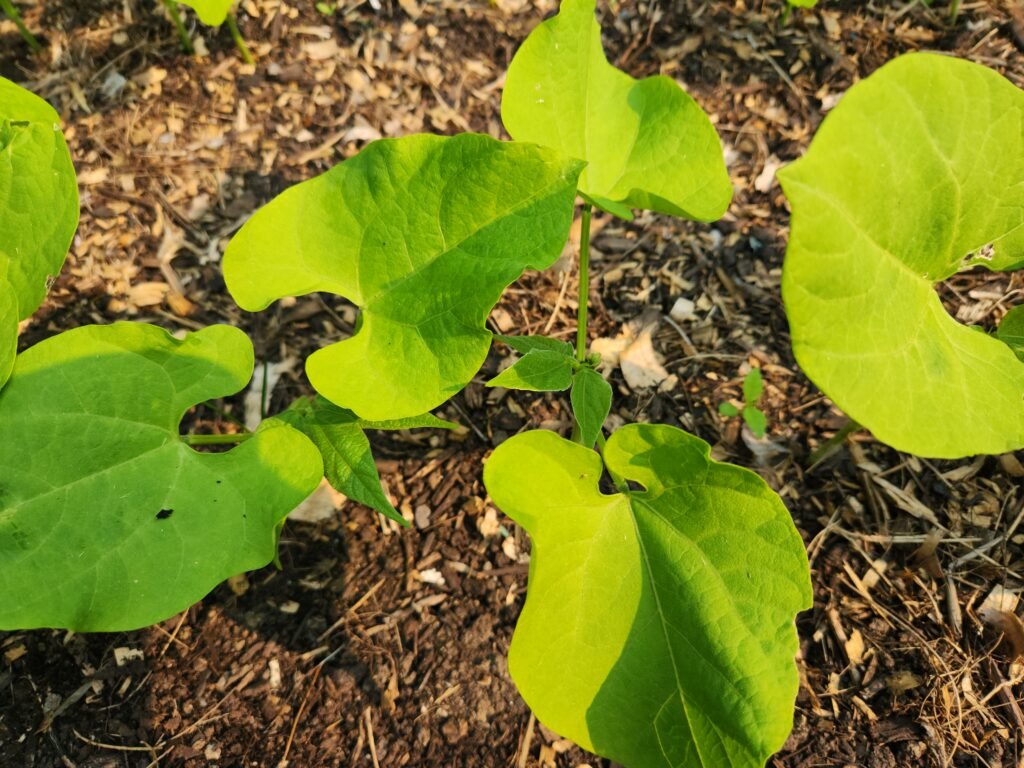
Germinating kidney beans is quick and easy process. These red beans are fast growers and will germinate in as little as 4 days in ideal conditions. Once germinated they will shoot up large green leaves and, in about a week, will start growing their first true leaves.
How To Care For Kidney Bean Plants All Season?
Watering:
Keep the soil moist without being water logged. Kidney beans have a shallow root system so they will need consistent water throughout the growing season. Check the top 2-3 inches of soil and if it is dry, then they need water.
Stop watering when the first beans start to dry out. This will help speed up the drying process so you can harvest your beans sooner.
Fertilizing:
Kidney beans do not require much care during the growing season other than watering. Like other legumes, they are nitrogen fixing plants, in the most basic terms that means they naturally add nitrogen into the soil, so they do not require a fertilizer like other vegetables.
Mulching:
Mulching is very important for kidney beans. Their shallow roots will benefit from a good inch or two of mulch to prevent the need to water as often. Our favourite types of mulch to use for beans are grass clippings, straw, or old wood chips. Check out our how to mulch article for more information.
Do You Need A Trellis To Grow Kidney Beans?
Kidney beans that are bush beans do not need a trellis. They will grow to be 1-2 feet high and can support themselves. If you are growing other poll varieties of beans they will require a trellis. A Trellis helps maintain good airflow, prevents diseases, and makes harvesting easier.
What Do Kidney Bean Flowers Look Like?
Kidney bean flowers are small white flowers with soft delicate petals. They are self pollinating so you don’t need to worry about that. This makes beans great for greenhouse gardening since a lot of pollinators won’t go into a greenhouse.
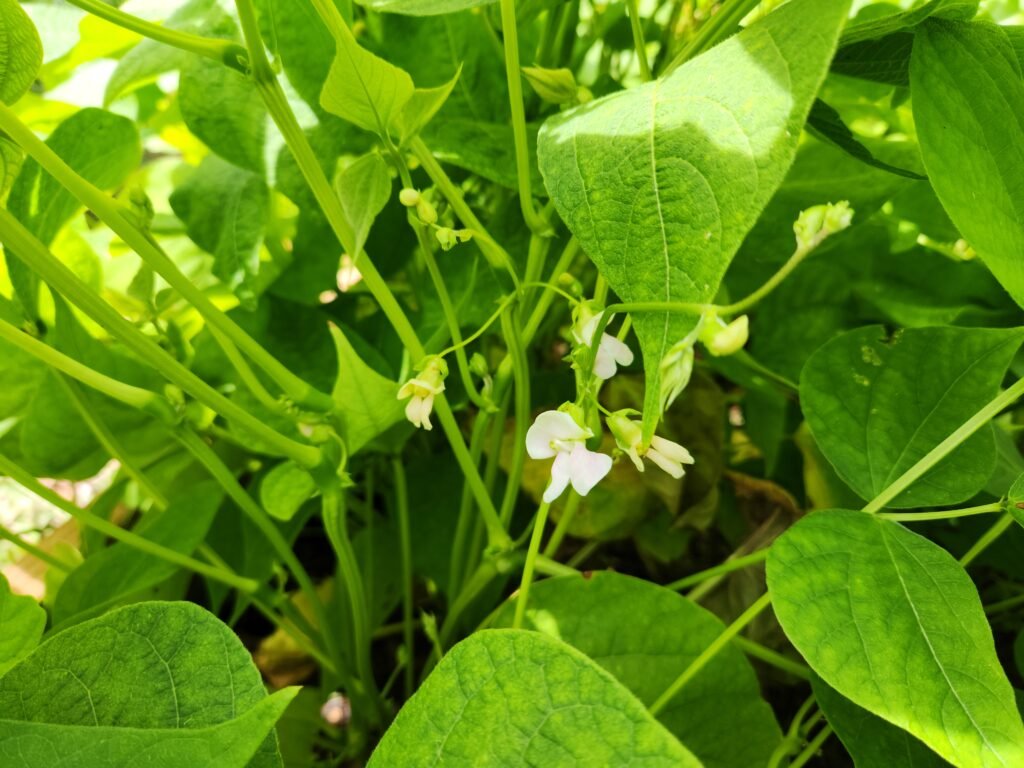
How Long Kidney Beans Take To Grow From Seed To Storage?
Kidney beans are a long season crop. They need to be planted after the risk frost in your area has past, and they need a fairly long growing season.
From planting to harvest expect 110-140 days of growing. In zone 5b we have just enough of a growing season to plant our beans at the end of May and harvest in September/October.

When To Harvest Kidney Beans For Dry Storage?
Kidney beans are ready to harvest when the outer shell of the beans are dry and pale beige colour. You can also shake a bean pod and you should be able to hear the beans rattling inside. Another test you could do is simply open up one bean pod and try to squeeze the bean. If you are not able to squeeze it, then it’s ready to be harvested.
- Do not harvest beans after a rainfall or during the early morning when there is dew on the ground.
Can You Harvest Kidney Beans That Aren’t Completely Dry?
If you’re running out of time in your growing season or live in an area that has a shorter growing season, all is not lost for you. You can harvest your beans that have started to turn brown but aren’t quite dry yet.
To do this, pull out the entire plant and hang it upside down in a warm dry place to let the beans completely dry while still on the vine.
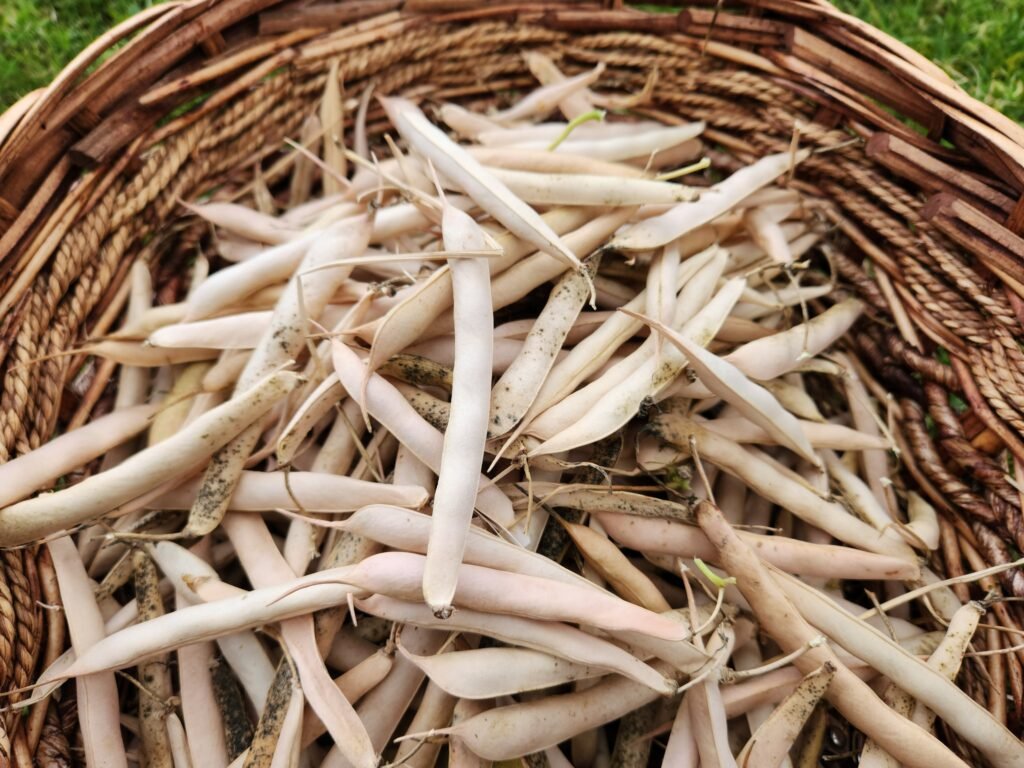
Quick Way To Shuck Dried Beans:
There are a few ways to remove beans from the pod once they are fully dry. A common method is to get a burlap sack, put all the beans in the sack and beat them with a stick. Another method if you have a lot of beans is to put them into a large Rubbermaid container and stomp on them with your feet.
We harvest a modest amount of beans so what I did was get a large container with a lid, I used an old coffee container, put the beans in and pop the lid back on. Shake the container around for a few minutes and the majority of beans are dislodged from the pods.
Once the beans are removed from the pods they can be winnowed using a small fan to remove any loose broken bits of the pod that’s left from the beans until you only have beans.
How Do You Store Kidney Beans?
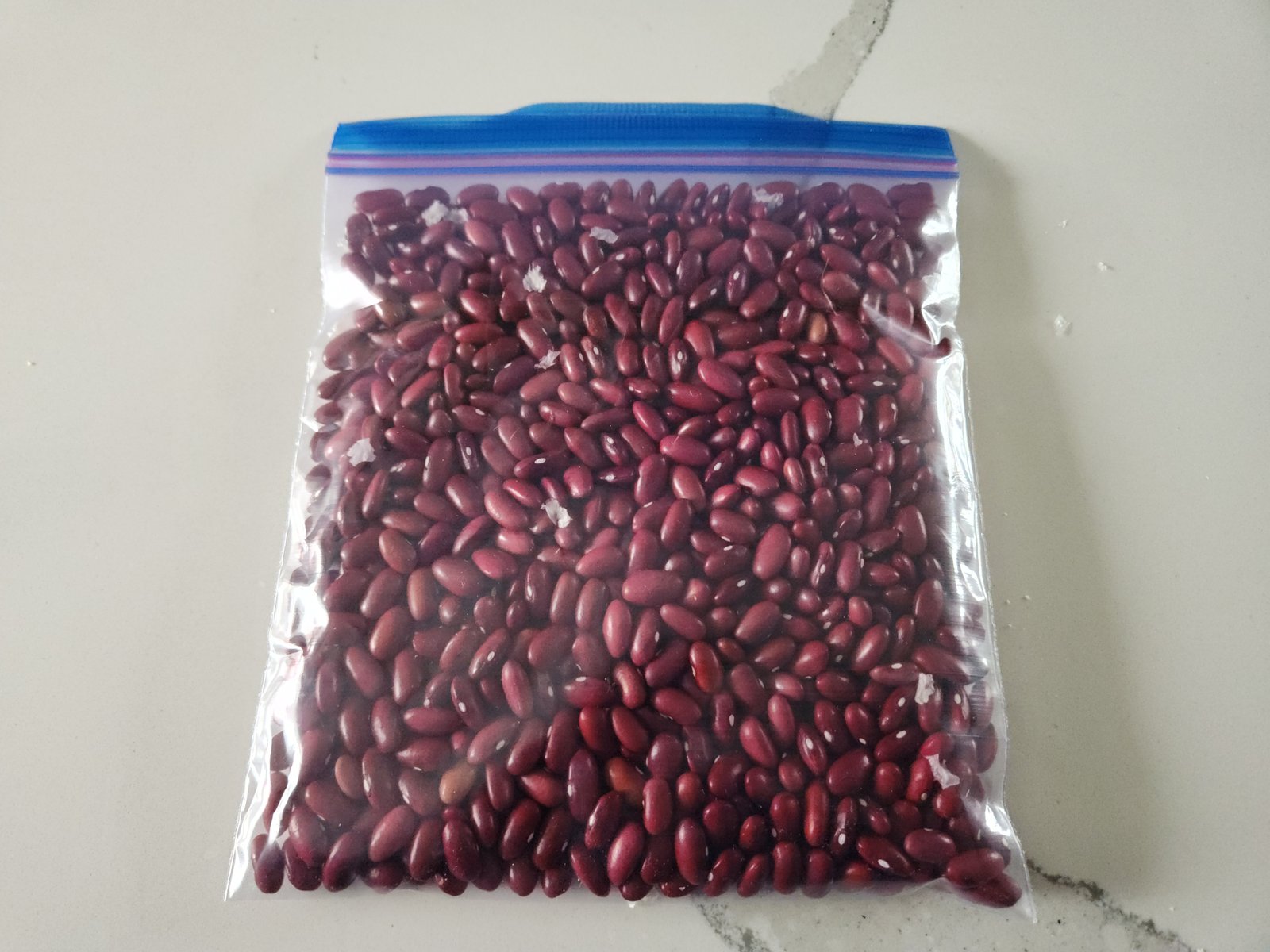
The best way to store kidney beans is in a glass jar with a lid or a plastic bag that you can shut. Keep the beans in a cool dark place and away from moisture until you need to use them.
You can use your dry beans as food and when it comes time again you can plant them and start the cycle over again.
How Long Do Dry Beans Last In Storage?
THIS is what makes kidney beans the ultimate survival food. If kept in proper conditions they will last almost indefinitely. You can take them out whenever you want to cook some up and they are almost a complete meal in and of themselves.
Frequently Asked Questions About Growing Kidney Beans:
Kidney beans grow best in temperatures between 70°F and 80°F (21°C–27°C). Soil should be warm (above 60°F or 15°C) before planting to encourage strong root development.
Raw kidney beans contain phytohemagglutinin, a toxin that can cause food poisoning. Drying preserves the beans, and boiling them for at least 30 minutes neutralizes the toxin, making them safe to eat.
Common pests include aphids, leaf-hoppers, and bean beetles. Powdery mildew and rust are frequent diseases. Use organic insecticides, companion planting, and proper spacing to prevent these issues.
Mulching around the plants helps suppress weeds and retain moisture. Hand-pulling weeds regularly also prevents competition for nutrients.
Conclusion
Growing kidney beans is a rewarding and practical addition to any garden, especially for those focused on self-sufficiency and survival preparedness. With proper care, the right growing conditions, and a little patience, you can enjoy a bountiful harvest of nutrient-dense beans that store well for long-term use. Whether you’re planting in a garden bed or a container, kidney beans are an excellent choice for boosting your food security and sustainability.
Start growing your own today and enjoy the benefits of this ultimate survival food!
We hope you enjoyed this growing guide. If you did make sure you check out the other growing guides, seed saving guides and our recipes. We are growing our website with more articles all the time, and we invite you to grow with us. If you have any questions about kidney beans or would like to share some of your knowledge with us please leave a comment below.

